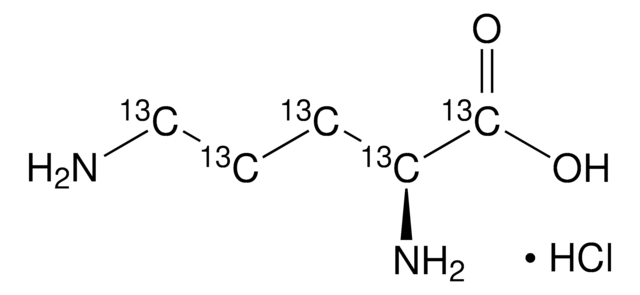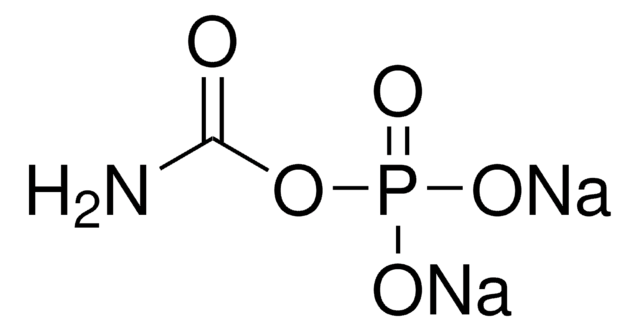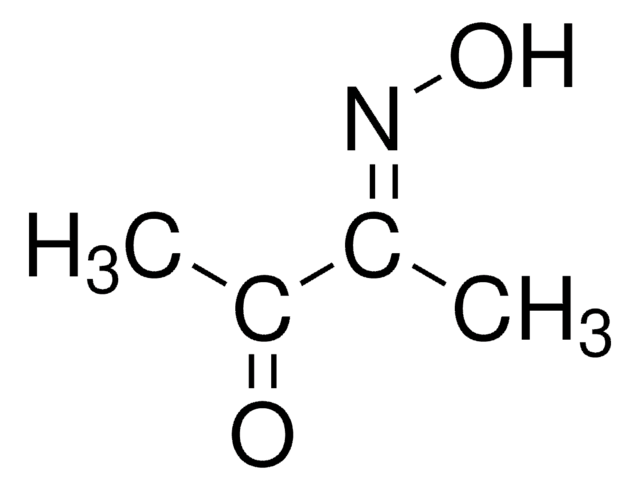75440
L-Ornithine dihydrochloride
≥99.0% (AT)
Sinonimo/i:
(S)-2,5-Diaminopentanoic acid dihydrochloride
About This Item
Prodotti consigliati
Livello qualitativo
100
200
Saggio
≥99.0% (AT)
Stato
crystals
Attività ottica
[α]20/D +17±1°, c = 5% in H2O
tecniche
ligand binding assay: suitable
Residuo alla calcinazione
≤0.1% (as SO4)
Colore
colorless
Punto di fusione
197-199 °C (dec.)
Anioni in tracce
sulfate (SO42-): ≤100 mg/kg
Cationi in tracce
As: ≤0.1 mg/kg
Cd: ≤5 mg/kg
Co: ≤5 mg/kg
Cu: ≤5 mg/kg
Fe: ≤5 mg/kg
NH4+: ≤100 mg/kg
Ni: ≤5 mg/kg
Pb: ≤5 mg/kg
Zn: ≤5 mg/kg
Stringa SMILE
Cl.Cl.NCCC[C@H](N)C(O)=O
InChI
1S/C5H12N2O2.2ClH/c6-3-1-2-4(7)5(8)9;;/h4H,1-3,6-7H2,(H,8,9);2*1H/t4-;;/m0../s1
HGBAVEGDXFHRQP-FHNDMYTFSA-N
Azioni biochim/fisiol
Codice della classe di stoccaggio
11 - Combustible Solids
Classe di pericolosità dell'acqua (WGK)
WGK 3
Punto d’infiammabilità (°F)
Not applicable
Punto d’infiammabilità (°C)
Not applicable
Scegli una delle versioni più recenti:
Certificati d'analisi (COA)
Non trovi la versione di tuo interesse?
Se hai bisogno di una versione specifica, puoi cercare il certificato tramite il numero di lotto.
Possiedi già questo prodotto?
I documenti relativi ai prodotti acquistati recentemente sono disponibili nell’Archivio dei documenti.
I clienti hanno visto anche
Il team dei nostri ricercatori vanta grande esperienza in tutte le aree della ricerca quali Life Science, scienza dei materiali, sintesi chimica, cromatografia, discipline analitiche, ecc..
Contatta l'Assistenza Tecnica.









